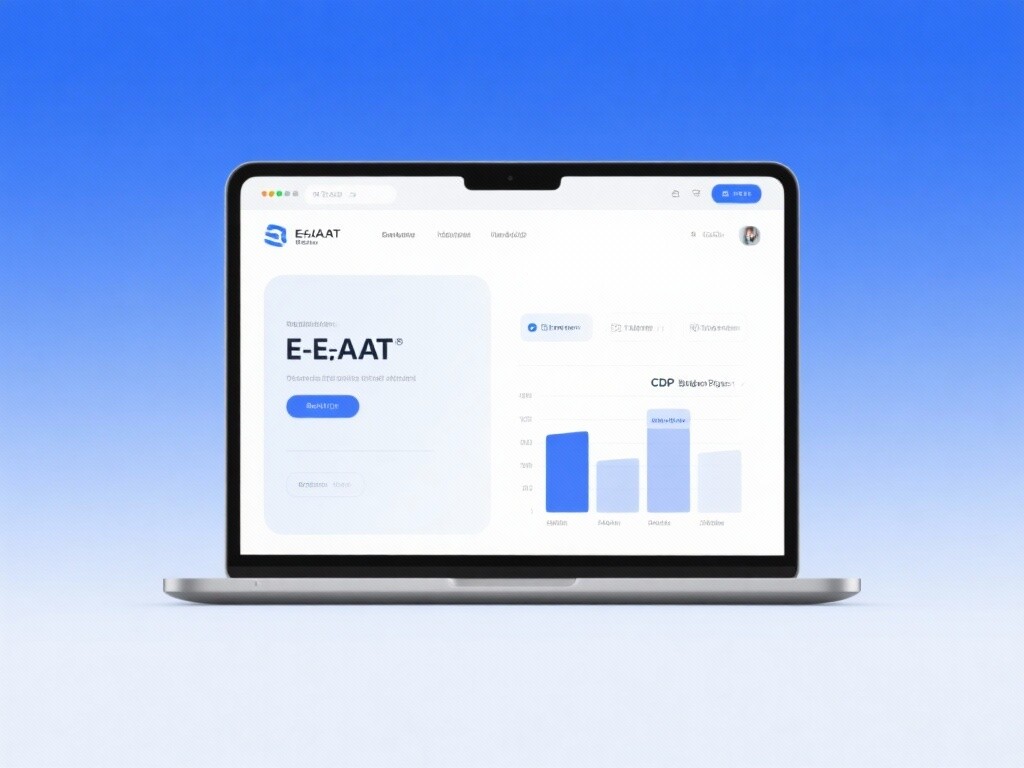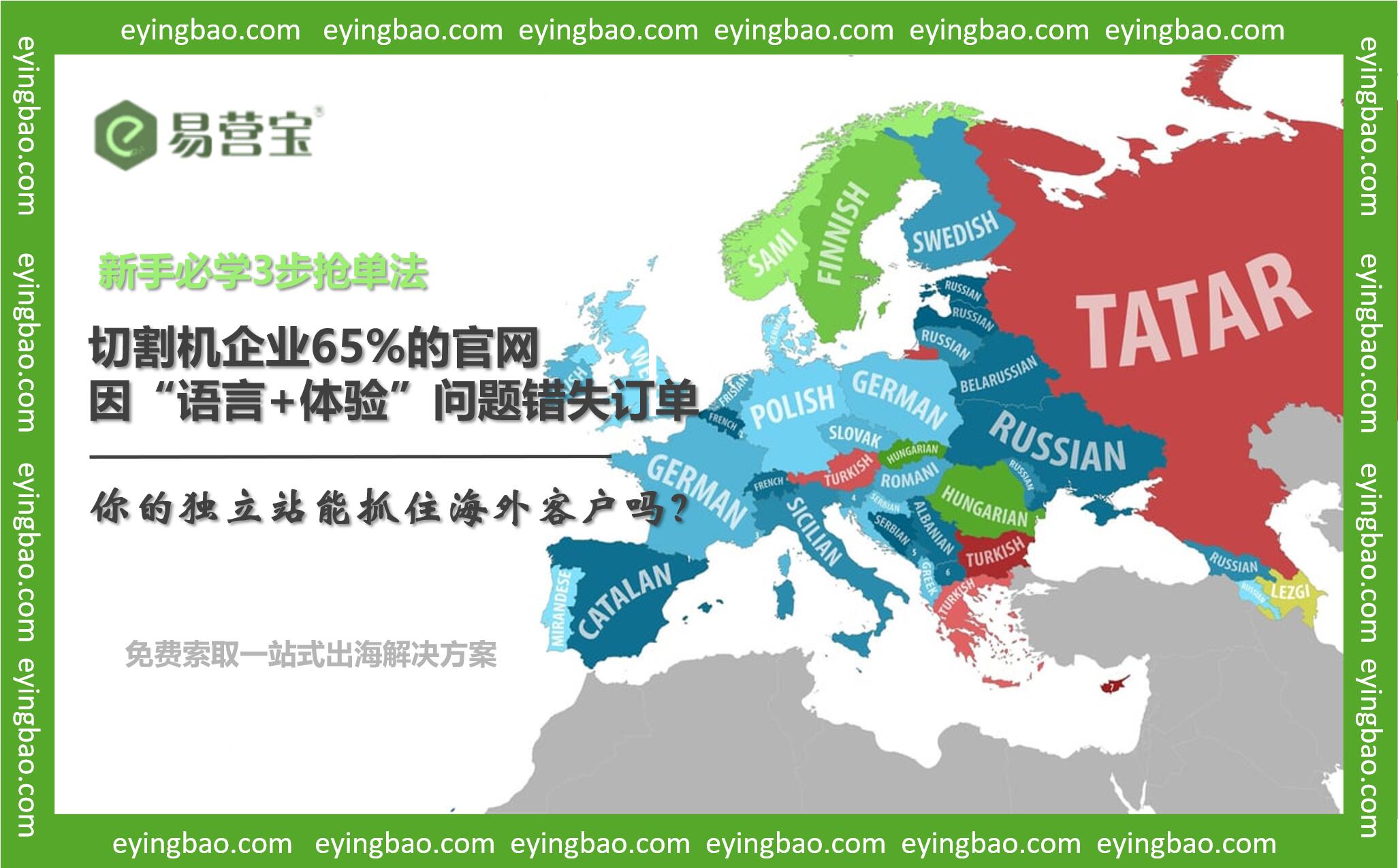I. The Authoritative Definition, Strategic Core, and Development History of Brand Independent Websites
1. The Authoritative Definition and Key Elements of Brand Independent Websites
A Brand Independent Website (Brand Independent Website) refers to an official website built by foreign trade enterprises that **fully owns domain names, servers, and data control rights**, with the core goal of **establishing, disseminating, and consolidating its own brand value**. It transcends the transactional functions of traditional independent websites, focusing on **brand storytelling, vision, culture, user experience, and differentiated value** output. Core elements include: **proprietary brand assets, high user experience (UX), E-E-A-T authority, and a central data platform (CDP)**.
2. The Three Irreversible Strategic Values of Brand Independent Websites
Brand independent websites are long-term strategic investments for enterprises to navigate economic cycles:
- **Premium Pricing and Risk Resilience:** After establishing brand recognition, enterprises can break free from low-price competition, achieve product premium pricing, and reduce dependency risks on single platforms.
- **Private Data Asset Consolidation:** Independent websites are the only channel to fully and securely collect **first-party customer data (CDP)**, providing core support for precision remarketing and new product development.
- **Highest SEO Authority (E-E-A-T) Carrier:** Brand official websites are the highest-trust carriers by Google, serving as the ultimate destination for all content, technology, and authoritative links, helping secure long-term high-value rankings.
3. The Development History and Evolution of Brand Independent Websites
Early Stage (2000s): Independent websites were mostly **static display-type websites** with simple functionalities. Mid-Stage (2010s): Independent websites began integrating **transactional functionalities (DTC model)**, but brand awareness was weak, often serving as "low-price traffic tools." Modern Era (2020s to Present): They have evolved into **"content + data + experience"-centric brand hubs**, emphasizing **sustainability (ESG), user communities, and omnichannel** integration while strictly adhering to global data privacy and SEO authority standards.
II. The Five Core Technical Principles of Brand Independent Websites: Experience, Data, and Trust

The technical principles of brand independent websites lie in integrating brand tonality into every technical detail:
1. E-E-A-T-Driven Content Architecture Principle
Principle: Brand stories, corporate credentials, founding team backgrounds, patents, etc., are no longer simple standalone page elements but require **structured data (Schema Markup) and clear internal linking** to systematically communicate **brand authority** to Google. Technical Application: Pages like "About Us," "Case Studies," and "Team Introductions" must include **Person/Organization Schema** and display verifiable **industry certifications** to enhance overall E-E-A-T weight.
2. Customer Data Platform (CDP) Construction Principle
Principle: A CDP is a **centralized, standardized, and continuously updated** first-party customer database. Technical Application: Brand independent websites must integrate advanced **GA4, CRM, email marketing, and customer service systems**, consolidating data such as **browsing behavior, purchase history, email open rates, and inquiry content** to form a **360-degree customer profile** for precision remarketing and personalized experiences.
3. The Unified Principle of User Experience (UX) and Conversion Rate Optimization (CRO)
Principle: The UX of brand independent websites must not only be user-friendly but also **faithfully reflect brand tonality**. Technical Application: During A/B testing (CRO), focus should not only be on conversion rate improvements but also ensure test results **align with brand aesthetics and user promises**. For example, premium brands should avoid overly cheap visual designs or aggressive pop-ups for short-term conversions.
4. Global Content Delivery and CWV Performance Principle
Principle: Global brand independent websites must provide a consistently fast access experience **in any country**. Technical Application: Deploy **global CDN (Content Delivery Network), TLS 1.3 protocol, and server-side rendering (SSR)** to ensure independent websites meet **Core Web Vitals (CWV)** standards in North America, Europe, and Asia, especially LCP (Largest Contentful Paint).
5. Data Privacy Compliance (GDPR/CCPA) Technical Principle
Principle: Compliance is the cornerstone of global brand trust. Technical Application: Brand independent websites must deploy professional **Cookie Consent Management Platforms (CMPs)** for **granular user consent management**. Ensure explicit, informed consent is obtained before collecting data from European (GDPR) or Californian (CCPA) users, which is key to preventing legal risks and maintaining brand reputation.
III. The Four Core Technical Features and Applications of Brand Independent Websites
1. Technical Feature: Omnichannel Integration Capability
Feature: Brand independent websites are the **data hub** connecting all online and offline channels. Application: Through **API interfaces**, independent websites synchronize inventory data to Google Merchant Center, customer service history to CRM, and social media reviews to product review sections, achieving **closed-loop data flow** for a consistent brand experience.
2. Practical Application: User Community and UGC (User-Generated Content) Integration
Application: Encourage and integrate user **reviews, Q&A, forums, and photo walls** on independent websites. This is vital for building brand loyalty and natural SEO content. Technique: Use **Schema.org/Review** markup to enhance SEO rankings and click-through rates.
3. Practical Application: Personalized Experience and Dynamic Content Display
Application: Based on CDP data, brand independent websites can display **personalized content and product recommendations** for different users. Example: For users who frequently visit German pages but haven’t inquired, showcase **success cases from local German clients** or provide **German customer service guidance** to improve conversion efficiency.
4. Practical Application: SEO Strategy for Brand Safety and Trust Terms
Application: Beyond conventional keywords, SEO optimization for brand independent websites emphasizes **trust terms** (e.g., Brand Name+Review, Brand Name+Quality, Brand Name+Warranty). Ensure these terms dominate authoritative, positive content in search results, which is key to **actively managing brand reputation**.
IV. Comparative Analysis of Brand Independent Websites vs. Traditional Platforms/Low-End Independent Websites and Industry Scenarios

1. Brand Independent Websites vs. Traditional Platforms/Low-End Independent Websites: Comparative Analysis
2. Typical Foreign Trade Industry Scenarios for Brand Independent Websites
Application focus of brand independent websites across different foreign trade industries:
- **B2C Consumer Electronics/Fashion:** Focus on **brand storytelling, visual experience, and social media integration**, launching limited-edition products via independent websites to enhance brand exclusivity.
- **B2B High-End Industrial Equipment:** Focus on **E-E-A-T injection in technical whitepapers, case study showcases, and multi-tier inquiry systems**, establishing industry-leading expert credibility.
- **Emerging DTC Brands (e.g., New Energy):** Focus on **sustainability (ESG) content and transparent supply chain displays**, attracting younger buyers through brand values.
3. Certification and Professional Standards for Brand Independent Website Development
Professional standards for brand independent websites:
- **Technical Standards:** Must pass **Google’s Core Web Vitals** assessment, meet mobile-first indexing requirements, and deploy **HSTS** for secure connections.
- **Brand Compliance:** Adhere to **WCAG (Web Content Accessibility Guidelines)** to ensure website openness to all users, reflecting social responsibility.
- **Data Standards:** Strictly follow **GDPR/CCPA** international data privacy standards, ensuring transparent cookie usage via **CMP**.
V. Launch Your Brand Independent Website Strategy Now and Seize Your Global Brand Future!
Is your independent website still stuck in the "product catalog" phase? Do you crave brand premium pricing and loyal global customers? Our expert team specializes in **brand storytelling E-E-A-T architecture, CDP data platform integration, and high-conversion CRO/UX design**. We help upgrade your independent website into a globally competitive brand asset, transitioning from price-based to value-based sales. Book a **free "Brand Independent Website Competitiveness Deep Dive"** now for a professional brand architecture upgrade and global customer acquisition blueprint!
Click to Get Your Free Brand Independent Website BlueprintFAQ
1. How much higher is the construction cost of a brand independent website compared to a regular independent website?
Answer: The **initial construction and operational maintenance costs of a brand independent website are typically higher**. This mainly reflects investments in **advanced design (UX/UI), CDP data integration, customized functionality development, and long-term high-quality content (E-E-A-T)**. However, the **brand premium and long-term repeat purchase ROI far exceed those of regular independent websites**.
2. How to achieve global data compliance (GDPR/CCPA) on a brand independent website?
Answer: The key is deploying **CMP (Consent Management Platform)**. It automatically identifies visitor locations and displays **granular cookie consent windows** based on local regulations. Simultaneously, the website must provide **clear privacy policies** and allow users to access or delete their data anytime.
3. What distinguishes the SEO strategy of a brand independent website from a regular one?
Answer: Regular independent website SEO focuses on **transactional keyword rankings and short-term traffic**; brand independent website SEO emphasizes **E-E-A-T authority, brand term searches, and trust term coverage (Review, Quality)**. Brand sites prioritize content cluster depth and breadth to establish industry expertise.
4. How can brand independent websites leverage social media (e.g., Instagram/TikTok) for closed-loop conversions?
Answer: Publish **high-visual-impact content and brand stories** on social media to attract followers, then use **Link in Bio tools, direct shopping cart links, or exclusive promo codes** to redirect traffic to the independent website. Simultaneously, leverage CDP data collected on the website for **high-precision remarketing** on social media.

Customer Reviews
General Manager Chen, US DTC Outdoor Products Brand
"We transitioned from Amazon to building our own brand website, and the biggest change was **customer loyalty**. By creating a user community and personalized recommendations, our **repeat purchase rate reached 40% within a year**. The professional design and brand storytelling of our independent site helped us stand out in a fiercely competitive red ocean, **with product premium prices increasing by nearly 30%**."
Manager Liu, Germany B2B Industrial Parts Exporter
"Previously, we were always compared on price, and our professionalism was questioned. Through the brand independent website built by our professional team, we rigorously showcased **technical whitepapers and team qualifications** with a structured **E-E-A-T framework**. Now, when clients visit us, they first recognize our **professional authority image**, **significantly improving inquiry quality and contract signing rates**."
 Annual revenue exceeding 10 million, transitioning from auto parts to energy storage, niche markets achieve major sales! (Part 2)Exploring how Datou Hardware Products Co., Ltd. successfully pivoted from auto parts to energy storage by establishing the standalone brand website DATOU BOSS and implementing precise marketing strategies to expand overseas markets, achieving annual revenue exceeding 10 million.
Annual revenue exceeding 10 million, transitioning from auto parts to energy storage, niche markets achieve major sales! (Part 2)Exploring how Datou Hardware Products Co., Ltd. successfully pivoted from auto parts to energy storage by establishing the standalone brand website DATOU BOSS and implementing precise marketing strategies to expand overseas markets, achieving annual revenue exceeding 10 million. Microsite + AI Negotiation Breakthrough! 3-Step Order Grabbing Guide for Jinan Cutting Machine NewbiesData shows that by 2025, 83% of global B2B buyers will make purchasing decisions through independent websites, but 65% of Jinan cutting machine manufacturers lose orders due to 'language + UX' issues. Can your website capture overseas clients?
Microsite + AI Negotiation Breakthrough! 3-Step Order Grabbing Guide for Jinan Cutting Machine NewbiesData shows that by 2025, 83% of global B2B buyers will make purchasing decisions through independent websites, but 65% of Jinan cutting machine manufacturers lose orders due to 'language + UX' issues. Can your website capture overseas clients? Precision Client Acquisition for Independent Websites: Data-Driven Marketing StrategiesThis article systematically elaborates on the full-process strategies for data-driven independent websites, from setup to client acquisition, covering key modules such as multilingual website technology selection, deep SEO optimization, smart advertising management, and integrating practical applications of AI marketing tools.
Precision Client Acquisition for Independent Websites: Data-Driven Marketing StrategiesThis article systematically elaborates on the full-process strategies for data-driven independent websites, from setup to client acquisition, covering key modules such as multilingual website technology selection, deep SEO optimization, smart advertising management, and integrating practical applications of AI marketing tools.





